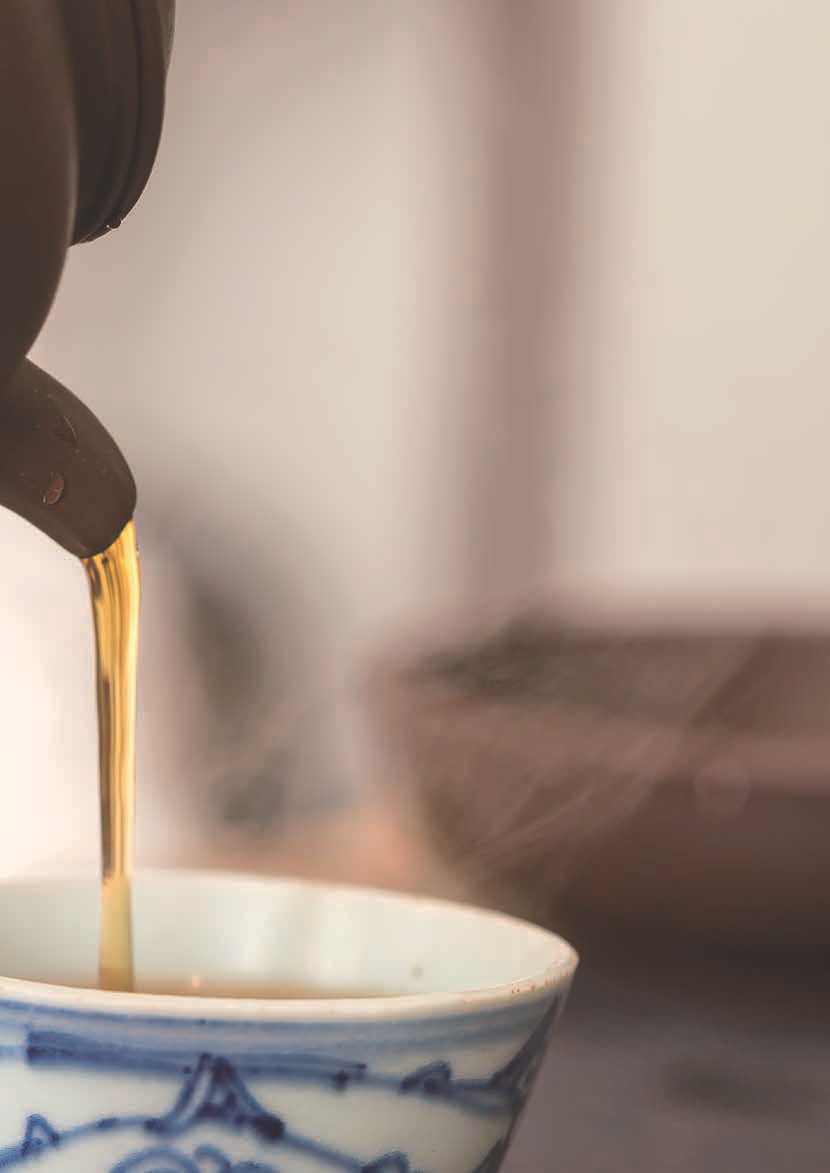
 |
|
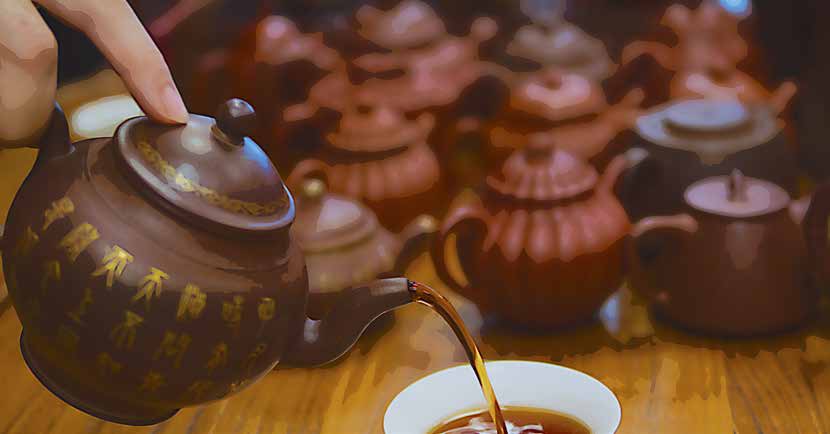
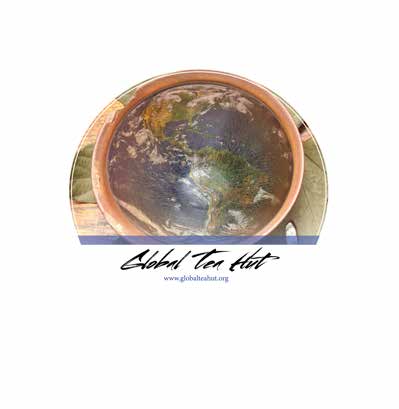


Another year and another set of fireworks to herald the amazing teas to come! Yet again, we are excited to start another year of Global Tea Hut with a bang. This is one of the rarest and most valuable teas we have ever sent. And through it we get the chance to talk about one of the teachers and tea brothers that has been the most influential to our practice and to the development of this Global Tea Hut, Master Tsai Yi Tze. Those of you who have visited the center will know this legendary tea well, as it is a local favorite. We drink it all the time, in fact. And if you are still on your way here, this will be a chance to sit and share one of our all-time favorite teas: Old Man Dong Ding!.
Taiwan is a small island with an abundance of magnificent teas. Although Taiwan acts as a sort of caretaker for many of the old puerh teas of Yunnan, it is better known for the local tea produced here. One of Taiwan's most famous oolongs is Dong Ding (or Tung Ting) oolong, and this is the tea we're sending you this month.
Dong Ding's name comes from the same place as the original Dong Ding bushes - Wuyi Mountain in China - and it means "Frozen Summit." As the name suggests, this tea knows how to handle a chill in the air, and it can help you do the same. (There is another local story for how it got its name, suggesting that the "Dong" refers to the flexing in the calf muscles required to get up the cliffs to the trees, as it sounds identical to that word in the local, Taiwanese dialect.) Traditional Dong Ding oolongs are expertly roasted, lending them a warming Qi and flavor that's ideal for autumn and winter. Better yet, they love to be infused many times, so they're perfect for warming up a few hours on a cool morning, or just after the increasingly early sunsets of the season.
According to local folklore, the original Dong Ding tea bushes were brought to Taiwan around 1855. Legend has it that a government official named Lin Fong Tse traveled to Wuyi and came back with thirty-six Ching Shin ("purified heart" or "tender heart") varietal tea plants. He gave twelve of these trees as a gift to a friend in Nantou, who then planted the trees amongst the gorgeous views outside the Nantou town of Lugu. Some of those original plants are still around today, and although a few of them have been overly taxed by cuttings for cloned bushes, there is still reverence for them in the area, and small offerings can sometimes be seen strewn around their roots.
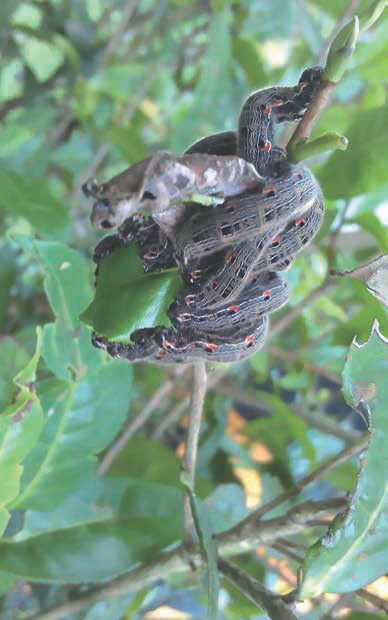

In the many years since the arrival of these twelve plants in Nantou, much work has gone into perfecting the processing of this distinctive varietal of tea. Nantou County tea makers (especially those around Lugu) have mastered the art of charcoal roasting and garnered immense respect for their medium-oxidized, dark roasted Dong Ding oolongs in the past. Unfortunately, the region temporarily lost its way when lighter oxidation, unroasted oolongs came into fashion in the 1980's, and many traditional processes were cast aside in favor of the prospect of higher profits. In an attempt to compete with the success of nearby San Lin Xi high mountain oolongs, the farmers of Lugu abandoned traditional processes, and many lost the knowledge and skills behind traditional oolong roasting entirely as a new generation of farmers took over. Perhaps even worse yet, the loss of traditional processing methods coincided with a switch to conventional farming. Realizing that they couldn't compete with the aroma of high mountain oolong (which is, by the way, the best thing high mountain oolong has going for it!), they began to pump their plants full of fertilizers in an attempt to increase their profit margins by drastically increasing amount. Much of the land surrounding Lugu was scorched with harsh chemicals in the decade or so after this shift, and some of it remains fallow or seriously damaged today.
However, in recent years awareness of more sustainable farming methods has become not just a practice, but also a necessity, and the older styles of oolong production have been revitalized by several tea masters who champion this classic style of tea. By now, most farmers in the Lugu area have recognized that an overuse of chemicals is extremely short-sighted, and while purely organic production is still rare, 'chemical load reduction' has become the new buzzword, and an awareness of increasingly sustainable farming practices is ever-growing as farmers see the direct relationship between healthy Earth and healthy plants, between their Tea's desires and their own desires, and between the planet's well being and their own. And although traditional processing still isn't nearly as well known or practiced as it once was, there is a growing support for it amongst the tea community within Taiwan and abroad.
Traditional Dong Ding oolongs are processed in a specific way requiring great skill. They are typically oxidized around thirty percent and rolled into a semi-ball shape during a process of "tsairou, dingshing and tsaipei." Tsairou is a process of rolling or kneading, requiring strength and endurance. It's often left to strapping young men who work as bamboo harvesters during the off-season. Dingshing is shaping, which is done with a cloth bag to produce the ball-shape. Tsaipei is roasting. These processes are managed by an experienced tea master who can evaluate the tea's oxidation levels by appearance and aroma at each step of the way.
After the tea has been processed, it is given a final "finishing roast." The lengthy roasting process is traditionally done in a charcoal fire pit, fueled with charcoal from a local wood, longyen (dragon eye) charcoal. During charcoal roasting, the tea is placed in a woven bamboo tray or basket and shaken over a stone pit. In the stone pit, embers gleam from beneath a thin layer of ash. The embers must be continually adjusted and readjusted to get the right temperature and to keep smoke to a minimum throughout the roasting. And although roasting is a very physically demanding process, the tea is often roasted for as long as eight or ten hours straight by a single tea master. Using this process to produce a full-bodied, well-rounded, complex and patient tea such as ours this month requires immense skill and many years of practice. Indeed, a skillful or unskillful finishing roast can make or break an oolong such as a traditional Dong Ding.

In Nantou, the transition to organic farming and traditional Dong Ding production is still fragile, and it needs proponents of real tea around the world to bolster it. Supporting and sharing teas like this organic, traditional Dong Ding is exactly what we love about selecting a Tea of the Month for Global Tea Hut. We hope that you'll also appreciate that the old way is the best way in the case of this sustainable, traditional tea, and that you'll share it with friends to spread the love of this time-honored tea even further around the world!
Our special oolong this month is very unique for tea production nowadays. Over time oolong production has moved more and more towards lighter, greener less-oxidized and/or roasted tea. This trend began in Taiwan in the late 1970's, but has since spread to the Mainland as well. At that time, the quality of life improved in Taiwan by leaps and bounds. Many of the world's goods were produced here, the way they are in China nowadays. The increase in wealth brought about a cultural renaissance, including tea. As the tea industry thrived, more and more investment moved to Nantou. Small, local farms were replaced with plantations that could create the yield needed to meet demand, and processing shifted more and more towards lighter, greener and more fragrant oolong, which appealed to the new mainstream tea drinker.
Since the Black Dragon first flew - and oolong means "Black Dragon" - it traditionally had a high degree of oxidation and roast. Oolong has always meant semi-oxidized tea, but the range of oxidation was much more narrow in the olden days. And most people who drink oolong will over time gravitate towards aged and/or more heavily-oxidized teas.
The simplest way of separating oolong tea is to call traditionally processed oolong "red liquor/water (hongshui oolong)" and the lighter teas "blue green liquor/water (qingshui oolong)." While qingshui oolong is fragrant, and often very enjoyable to drink, it also lacks the depth, character and body of traditionally processed oolong. Of course, any given green oolong might be better than any one particular traditional oolong, but in general oolong tea is richer, deeper and more satisfying when it is more oxidized and roasted. You shouldn't take our word for it, though. As always, we recommend experimentation. The good thing is that nowadays you can have the best of both worlds, and explore organic versions of both kinds of oolong!
As Master Tsai would travel to Dong Ding to get his different organic teas, he would sometimes drink tea with the old, retired grandfather that lived on the farm, Master Su. All the tea production has since been handed over to his son. Though the decades of tea oils soaked into the old man hands would have attracted any Chajin, every time they shared tea, Master Tsai noticed that the oolong was very different than what he was buying. After getting to know the old man better, Master Tsai inquired about this tea. The old man admitted that their farm was producing a relatively traditional Dong Ding oolong compared to what is available in the market nowadays, with more oxidation and roast. But to him it was still not "traditional" enough. He liked his tea as it had been made long ago when he was young. So every year he would process some of the tea for his own enjoyment, retiring in style, as it were.
After a few years and more rapport, Master Tsai asked if he could commission some of the tea the old man was enjoying, since he too preferred the taste of tradition. The farmers agreed and "Old Man Dong Ding" was born.
There are three main tea growing areas in Dong Ding: The highest is called Fong Huang, which is a relatively newer area to grow tea. Then, by the water, the oldest farms are in an area called "Zhong Ya." The lowest farms are in Yong Long. Our tea of the month is from Zhong Ya, which is considered to be the "true Dong Ding," and definitely the place where you could find an old man still making tea in the traditional style!


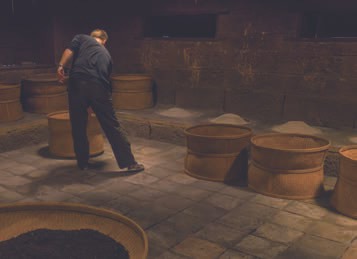

Like all fine oolong, this tea is processed mostly by hand. It is picked and withered, indoors and out. The defining characteristic of oolong tea is in the shaking, which bruises the edges of the leaves. This causes cellular breakdown that further semi-oxidizes the tea. Oolong is then fired to arrest oxidation and de-enzyme the tea. After that it is rolled to further break down the cells, release the juices and to shape the tea. Ball-shaped oolong, like this month's tea, is rolled in a twisted up cloth bag, which compresses and shapes the tea. Finally, and perhaps most importantly, oolong tea is roasted, which seals in the flavors and lends it depth. This stage also protects the tea for storage/aging.
This is one of our all-time favorite teas. It is deep, fragrant and has a long-lasting satisfaction. The Qi moves to the head and uplifts you. It tastes of nuts, plums, dates and often of Chinese medicine (the good kind). There is no greater sentiment than an afternoon without schedule or time, the sound of the kettle growing and a pot of fine oolong to share!
The Qi of this tea felt warming and centering. I felt it in the center of my chest when drinking and in the center of my eyebrows when smelling the cup. I also noticed that the sensations stayed more in the front of my head rather than distributing evenly throughout. In my mouth, the tea congealed and swallowed easily. Very soothing on the throat!
This tea is relatively balanced, sweet and tart in the first two steepings with a powdery, slightly astringent kougan. I noticed this especially in the area of the tongue that registers tartness. The astringency then rose to the center of the upper palate. It tasted of dry dates, plumb and roasted almonds. There was a heavier roast apparent especially in first three steepings. My favorite steepings were the third, sixth and seventh because the tartness falls off, giving rise to a mineral sweetness and full body that seems more essential to this tea.
With Winter in full swing, and the changes in weather bringing seasonal colds and coughs, we look to teas to warm ourselves from the inside out. This Old Man Dong Ding is a great example of a tea that does just that. Despite my congested nose, the aroma still rose into my forehead. Effortlessly, it seemed to fly down my throat, stopping only for a moment, requiring a light push. Splashing to the top of my mouth, it felt thick, structured and stayed together as the liquor passed through my lips. My cloudy mind, hazed by a lack of sleep and illness, started to clear. My irritated throat was soothed and coated in the tea's oil. My arms and head started to tingle and the Qi in the center of my chest started to slowly pulse. I felt a warmth rising from my dantian (the naval), and throughout my whole upper body. The Qi flickered like a soft flame, as though I was a candle, reaching its crescendo at my eyebrow center. Here, the Qi moved faster, and felt tighter, more concentrated.
I really liked the roast of the tea, and yet it didn't take away from the flavor. It was perfect and warming. It also caused a lot of salivation after each cup. After many infusions when the roast was gone, the tea still had an amazing flavor that continued for many steepings!

We recommend brewing this tea gongfu and staying present with it over many infusions. Notice the way that its aromas, flavors and Qi change as the tightly rolled leaves unfurl and expand in your pot. Feel the "roastiness," warmth and strength of early infusions shift into mineral notes and a softer feeling in later steeps. And listen to what the leaves want to tell you of their tale.
Oolong and gongfu tea grew up together. They are made for one another. To get the most out of an oolong tea, you will need a gongfu set. This doesn't mean it is impossible to enjoy this month's tea without one, but that you will need to brew gongfu to unlock Old Man Dong Ding's full potential.
Gongfu tea is a skill and mastery that can be cultivated for a lifetime, including deep, internal/spiritual mastery as well as greater skill with the art and craft of brewing - handling the pot, kettle and cups. Consequently, there is no formula or easy step-by-step guide to brewing gongfu tea. On the practical level, you need to focus on the heat. Temperature and graceful movements are the key to mastery in gongfu tea, and all the different aspects of brewing in this way will include temperature as an important factor.
When we brew gongfu tea well we "steal" the tea's essence, as Master Lin often says. If the temperature remains consistent and our movements are slow, gentle and graceful, then we disturb the tea as little as possible and its essence is released slowly over the session. This ensures a more patient tea and a better overall experience, as the shift from cup to cup is smooth and the transition even. This will take a lot of practice...
